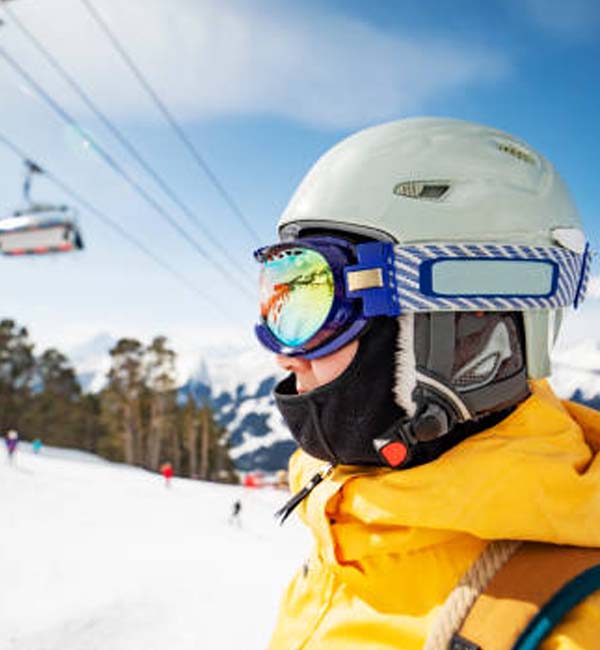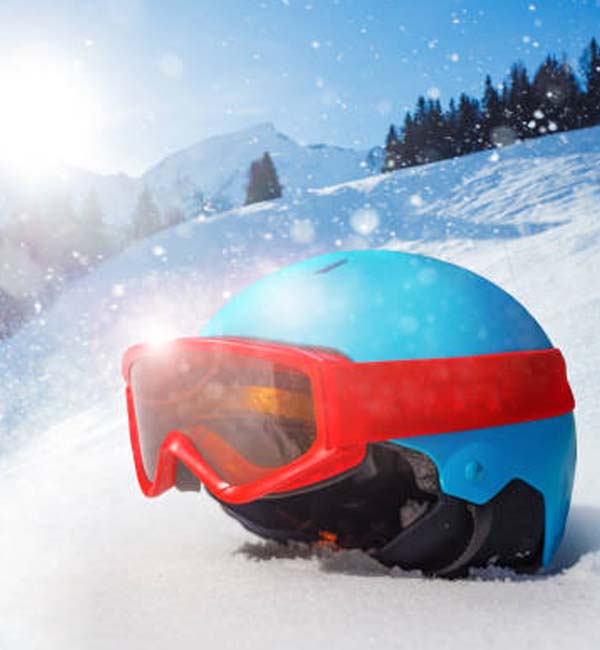
This guide will help you choose the perfect helmet, combining protection and comfort for your snowy adventures. Whether you're an experienced skier or a beginner, a properly fitted helmet is essential to reduce the risk of serious injuries. Learn how to measure your head to find the perfect size, understand the different helmet technologies available, and choose between lightweight, durable, and additional features for an optimal skiing experience. Protect your head and enjoy the snow to the fullest with the perfect ski helmet from Skioccas.
Getting ready to hit the slopes this season? Great decision! But before you get started, make sure you have the right gear. One crucial element? The ski helmet. This guide will help you choose the perfect helmet for optimal safety and comfort.
Skiing is an exhilarating activity, full of thrills and adventures. However, it's important to remember that it's a sport that comes with its fair share of risks, especially due to falls that can occur. While wearing a ski helmet is not mandatory except during ski lessons, it is highly recommended . A good ski helmet isn't just an accessory; it's a vital piece of safety equipment. In fact, it plays a crucial role in protecting your head from impacts, significantly reducing the risk of serious injuries.
In those moments when everything changes, whether from an unexpected fall or a collision, a ski helmet can make the difference between a minor jolt and a serious injury. By absorbing and distributing the energy of the impact, it protects your brain and skull , areas that are particularly vulnerable during skiing accidents. So, even if it's not required by law, choosing to wear a ski helmet is a prudent decision that demonstrates a commitment to your safety and that of other skiers.
Finding the right size for your ski helmet is essential to ensure optimal protection . A poorly fitting helmet, whether too big or too small, cannot provide the necessary safety in the event of a fall. To measure your helmet size, use a soft measuring tape. Wrap it around your head, passing just above your ears and eyebrows, where the brim of the helmet usually rests. Make sure the tape is horizontal and snug but not too tight. The measurement obtained in centimeters will correspond to your helmet size. Most helmet brands use standardized sizes, but it is always a good idea to check the size guide specific to each brand .

Once you've determined your helmet size, the next step is to ensure it fits properly . A properly fitted helmet should sit securely on your head without exerting uncomfortable pressure. When trying on a helmet, tilt your head forward and back, and gently rock it from side to side. The helmet shouldn't slip or move. If you wear goggles or ski masks , try them on with the helmet to make sure they fit properly.
Helmet straps also play a crucial role in fit. They should be adjusted so that you can fit a finger between the strap and your chin. A strap that's too loose won't hold the helmet properly in the event of a fall, while a strap that's too tight can be uncomfortable, especially during long days on the slopes. Some helmets offer additional adjustment systems, such as dials or buttons on the back, for an even more precise fit.
In-Mold helmets are a revolution in the world of skiing, combining lightness and effective protection . This technology involves molding the outer polycarbonate shell directly with the inner EPS (expanded polystyrene) foam, creating a one-piece helmet. The result? An extremely lightweight helmet that reduces neck and head fatigue, allowing skiers to stay comfortable and focused on the slopes all day long. Despite their lightness, In-Mold helmets don't skimp on protection and are able to effectively absorb impacts, making them ideal for downhill skiers and those who value speed and agility.
Hybrid helmet technology represents the perfect balance between lightweight and durable. These helmets combine two design approaches: an upper shell made of ABS (Acrylonitrile Butadiene Styrene), renowned for its strength and impact resistance , and an in-mold lower shell to reduce overall weight. This combination offers the best of both worlds: the strength of ABS where it is needed most and the lightness of in-mold for increased comfort. These helmets are particularly suitable for skiers who practice freeride or off-piste skiing , where the risk of impacts with hard objects such as rocks or branches is higher.
For those new to skiing or those who prioritize protection above all else, ABS helmets are an excellent choice. This technology uses an outer shell made of hard ABS plastic, known for its ability to withstand high impacts. Inside, EPS foam absorbs impact energy, reducing the risk of injury. While these helmets are generally slightly heavier than in-mold or hybrid models, they offer superior protection . They are ideal for novice skiers who may be more prone to frequent falls, as well as those who participate in more demanding disciplines, such as downhill skiing or snowboarding in rough terrain.

A well-ventilated helmet plays a vital role in your overall comfort on the slopes. Adjustable ventilation systems help control airflow , keeping you cool during intense descents and warm when you're on the lifts or taking a break. Good ventilation also helps prevent your ski goggles from fogging , which is crucial for perfect visibility. When purchasing a helmet, check if the vents are compatible with the type of goggles you wear. Some helmets are designed with specific ventilation systems that align perfectly with your goggles, ensuring optimal airflow and reducing the risk of fogging.
Taking care of your helmet is essential to ensure its longevity and performance. Clean the outer shell regularly with a soft cloth and a little warm water. Avoid harsh chemicals that could damage the materials. The inner lining can often be removed and washed by hand or machine, according to the manufacturer's instructions. Store your helmet in a cool, dry place , away from direct sunlight and extreme temperatures.
Remember: If your helmet suffers a significant impact, it's crucial to replace it, even if it appears intact externally. Internal damage isn't always visible, but it can affect the helmet's ability to protect your head.
Armed with these tips, you're now ready to choose the ski helmet that will offer you the best protection, comfort, and style for your winter adventures. A good helmet is an investment in your safety and enjoyment on the slopes. So, equip yourself wisely and enjoy every descent in complete safety!
Save products on your wishlist to buy them later or share with your friends.